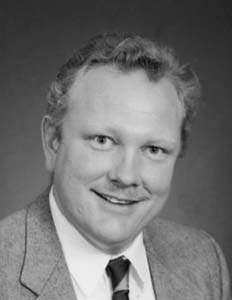EXPLORATION Oil, gas potential seen on 10 Venezuelan blocks
Gregory D. Croft, Karl W. StaufferVenezuelas congress approved on July 4, 1995, the offering of 10 exploration blocks (38300 bytes) after several months of discussions. This is the first new offering of exploration acreage in Venezuela since 1958 (OGJ, July 24, p. 21). Terms for the offering include a sliding-scale royalty, various taxes, a fixed work commitment, and a government participation share. This last parameter is offered by the bidder, with the largest participation share being the winning bid. The blocks are located in different parts of the country, but all 10 are located in basins that are prolific oil and gas producers. The following is a brief summary of the petroleum geology of each block.
Pantera Petroleum Inc.
San Leandro, Calif.
Block 1, Catatumbo
Located on the southwestern shore of Lake Maracaibo, this area is essentially unexplored but lies between the major Lake Maracaibo oil production and the oil producing areas along both sides of the border with Colombia. It is certain that almost all of the oil produced from the Venezuela-Colombia border area was sourced by the prolific Cretaceous La Luna formation in the Maracaibo basin and migrated to the southwest, in part through this block. A second, lesser source rock is the shale and coal of the Paleocene Orocue formation, but that unit tends to be gas prone. Reservoirs in this block would mostly be Tertiary sandstones, especially those of the Mirador and Carbonera formations. Cretaceous carbonates with sand interbeds are also likely reservoir rocks. Possible traps include stratigraphic wedgeouts as well as anticlines related to the thrust faults formed during the Miocene to recent uplift of the Merida Andes.Block 2, La Ceiba
This block is east of the southern part of Lake Maracaibo and immediately south of prolific Motatan field, which produces from Eocene Misoa sandstones. Well productivities from the Eocene sandstones at Motatan are quite variable but can exceed 5,000 b/d. Oil seeps along the foothills of the Merida Andes just south of this block indicate that oil migrated through the block from north to south. The source of the oil is the La Luna formation. The most likely reservoir rocks are the Misoa formation and other Tertiary sandstones, as well as fractured carbonates and sands of the Cretaceous Cogollo group. Traps are likely to be structures associated with the Andean uplift or with earlier, left-lateral strike slip faulting.Block 3, Guanare
The block is located in the northeastern part of the Barinas basin, which is the northern extension of Colombias prolific Llanos basin. Sediments in this block reach thicknesses of about 15,000 ft. The source of the hydrocarbons on this block is again the La Luna equivalent, principally the Cretaceous Escandalosa formation. The most likely reservoirs are sandstones of Tertiary age, particularly the Eocene Gobernador formation that produces in the older fields to the southwest. Other possible reservoirs are the sands and limestones of the Upper Cretaceous. This relatively unexplored block (only one well has been drilled in the area) has the glamor of traps associated with large horizontal thrusts. In the foothills along this same mountain front are the giant fields of the Furrial trend in eastern Venezuela and the Cusiana trend in the Llanos basin of Colombia.Block 4, San Carlos
This block is located along the southern margin of the Merida Andes near the El Baul arch, which separates the Eastern Venezuela basin from the Barinas basin. This is a relatively unexplored block that has interesting potential. Source rock is not considered a problem as the Escandalosa formation is either on the block or nearby. Structurally this block is very complicated; it is at the intersection of two structural trends, has sedimentary section that wedges out against the El Baul arch, and has south verging thrust faults. Likely reservoirs in this block are the sandstones of the Tertiary, particularly the Eocene, and possibly sandstones and carbonates of the Cretaceous. Likely traps are anticlines associated with thrust faults, possibly older Tertiary fault blocks, and updip pinchouts. Late structural movement associated with the Merida Andes may have destroyed earlier traps.
Block 5, El Sombrero
El Sombrero is located about 50 miles south of Caracas. The major natural gas accumulation at Yucal-Placer is located immediately east of and on trend with this block. To the southeast is the Las Mercedes area, which has produced about 200 million bbl of oil from sands that range in age from Miocene to Cretaceous. Sediments in this block are up to 10,000 ft thick and hydrocarbons may be either oil or gas. The bounding thrust fault of the Coastal Range is close to the northern boundary of the block. Possible traps in this block include anticlines and thrust structures related to the uplift of the Coastal Range and sand pinchouts to the south in younger units. The major source rocks here are probably the shales of the La Luna equivalent formations, although some sourcing from Tertiary shales, especially of gas, may have occurred.Block 6, Guarapiche
This area is east of the city of Maturin along the famous Furrial trend, where many giant oil and gas fields have been discovered in the last 10 years. The recent discoveries have all been to the west of this block, but the geologic structure in the area trends east-west and continues through the block. Source rock is not a concern in this area given the prolific nearby discoveries. The major source is again the La Luna equivalent, here called Querecual and San Antonio, although there is probably a secondary contribution from the Miocene Carapita formation. Potential reservoirs include Miocene, Oligocene, and Cretaceous sandstones, as in the Furrial trend, as well as Plio-Pleistocene sands such as produce in Quiriquire and Pedernales fields. Traps are probably related to thrust-faulted structures, although there may be stratigraphic traps in the younger Tertiary and flank traps against shale diapirs. Reservoir quality and continuity are the principal risks associated with this block.Blocks 7-8, Gulf of Paria
These blocks cover the southern part of the Gulf of Paria from the Venezuelan coast to the marine boundary with Trinidad. These are the only wholly offshore blocks. The blocks are located near the axis of the gravity low that marks the center of Tertiary sediment accumulation in the Eastern Venezuela basin. Sediments here may be more than 30,000 ft thick. That there are hydrocarbons in the area is clear; Pedernales field is just onshore to the south, the Furrial trend is to the west, and the oil fields of southern Trinidad are on trend to the east. Geological and structural trends do appear to continue all the way from the Furrial area into Trinidad, although facies changes of individual units also occur. Source rocks are largely the Querecual of Upper Cretaceous age, called the La Luna further west and the Naparaima Hill in Trinidad. The most likely reservoirs are Neogene sands and perhaps Paleogene and Cretaceous sands.Traps in these blocks may include thrust related structures as well as unconformities, stratigraphic traps, and traps against the flanks of shale diapirs. Reservoir continuity may be a problem in these blocks.


